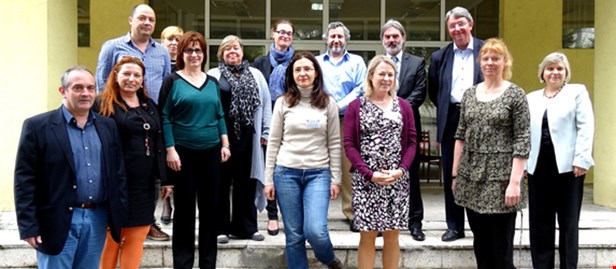European guidelines on early cleft care adopted this February
 © Picture: Bulgarian Standards Institute, April 2014, delegates from Belgium, Estonia, Germany, Romania, Spain and the UK
© Picture: Bulgarian Standards Institute, April 2014, delegates from Belgium, Estonia, Germany, Romania, Spain and the UK
A 2009 survey for UNICEF showed that nearly 40% of parents of children born with clefts in Bulgaria were advised to leave their baby in an institution. These worrying figures urged the European Cleft Organisation (ECO) to undertake major steps to look for European solutions, as no national protocol exists in certain countries in this area. They were successful as European guidelines on the early care of babies were adopted on 7 February 2015.
“There are huge disparities in cleft care across Europe and in some countries no national protocols exist. In most cases wrong decisions happen not because of a lack of resources but about wrong information given at birth and lack of awareness of correct referral procedures” explained Gareth Davies of ECO.
This is the reason why the organisation approached the European Committee for Standardisation (CEN). At that time they were elaborating a European Standard in Aesthetic Surgery which prompted ECO to propose a European Standard in cleft care. However this was not possible because they were deemed to be encroaching on national health policies. EPF supported ECO at that time and wrote to CEN to bring a wider European patient dimension to this issue (link).
A proposed alternative was to develop a Technical Report containing guidelines in early cleft care. “This stopped short of being a full European Standard but would, if successful, give us our desired end product – a document agreed at a European level that would serve a blueprint for early cleft care” said Gareth.
The CEN approved the proposal and a joint secretariat and a Technical Committee were established to draft the report. “We were delighted to have a large number of representatives from Eastern Europe on the Committee as it brought direct engagement with the countries where the guidelines were most needed” told Gareth.
The final document was adopted by a majority vote in February 2015. The next step is to bring the document to the attention of health ministries across Europe as a baseline document for early cleft care and ensure that all cleft family support groups are aware of its existence.
“With the support of professional groups these guidelines may lay the foundations for European or International Standard. Approaching CEN may not the right route for every patient group wishing to promote and enhance care for their members, but it is certainly one well worth exploring and it has worked for us” concludes Gareth.
